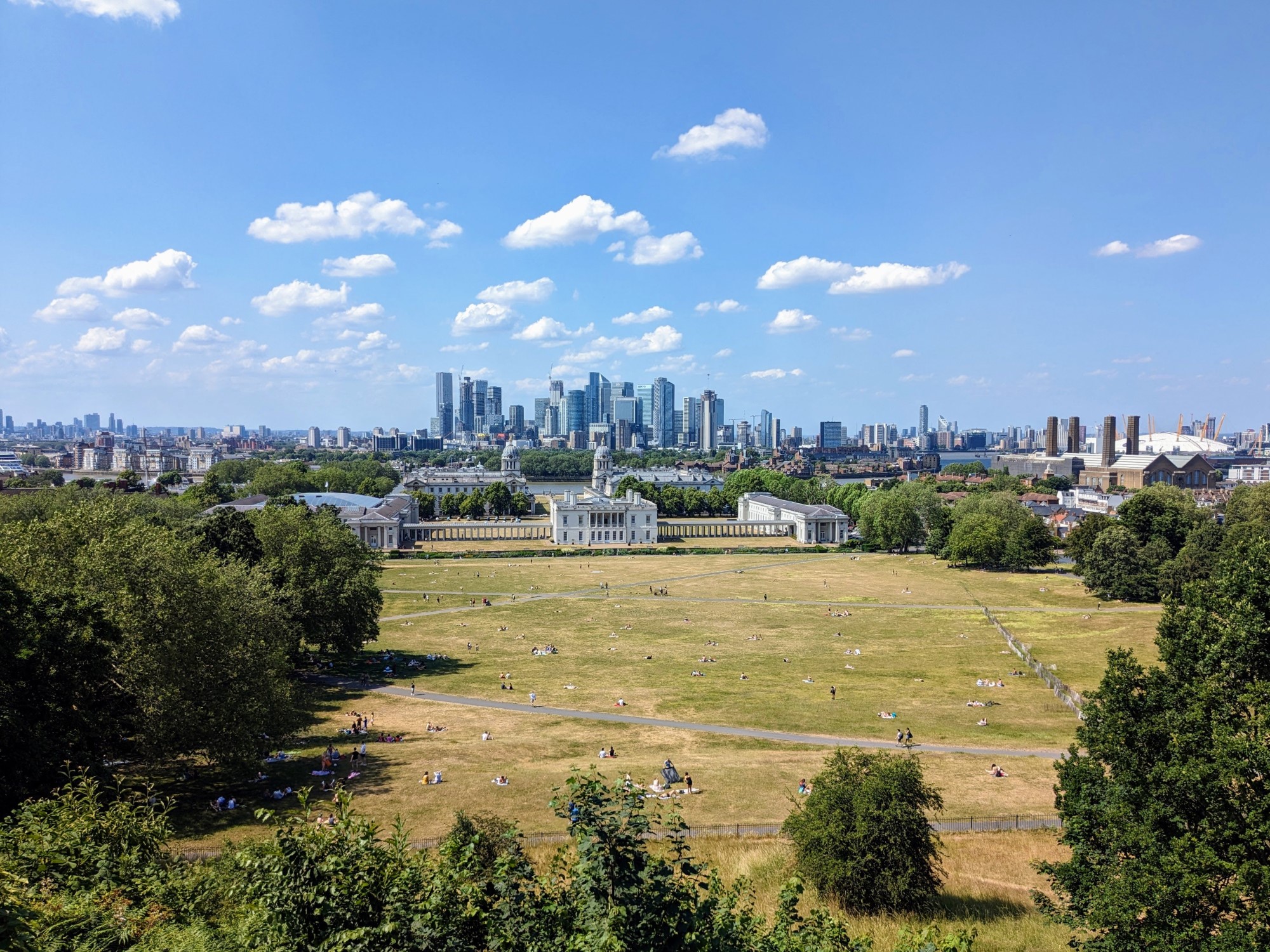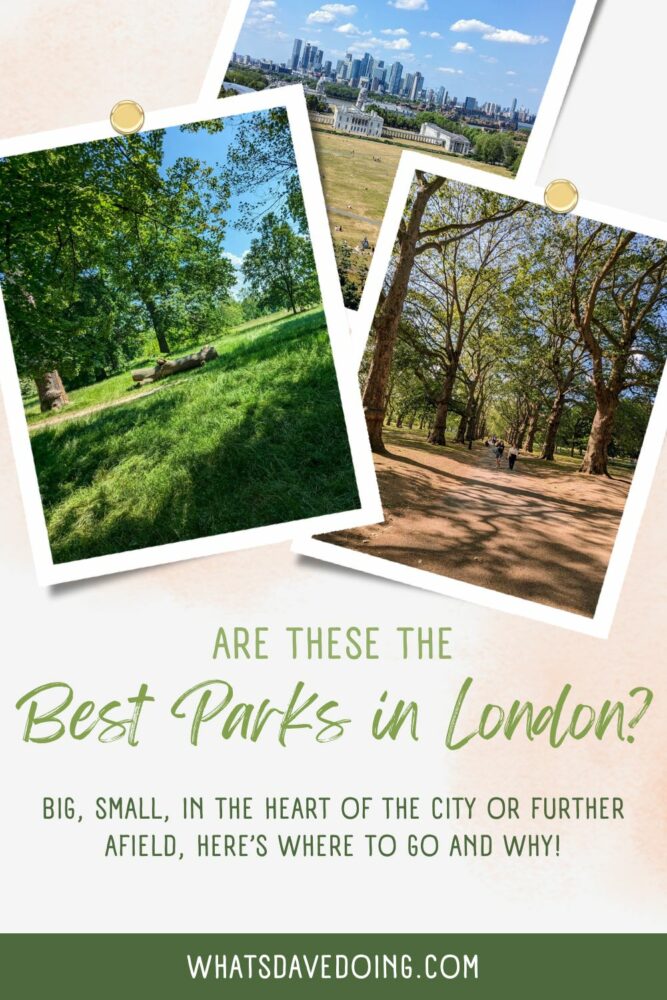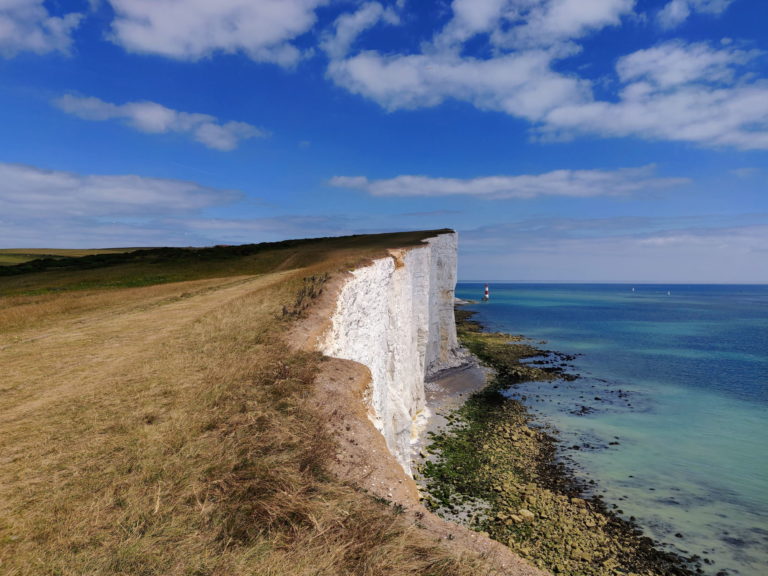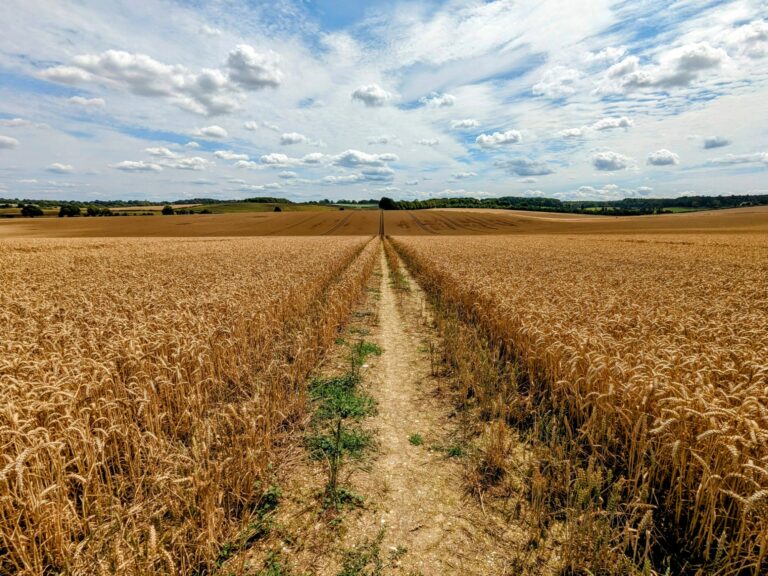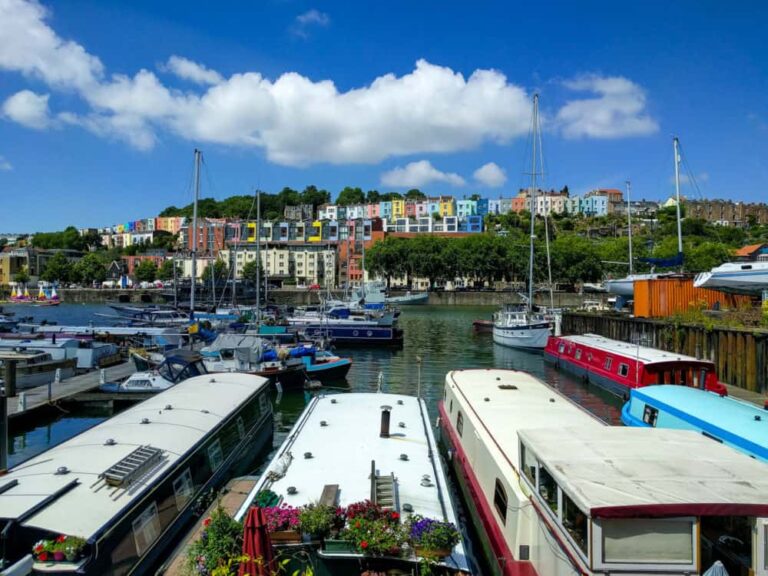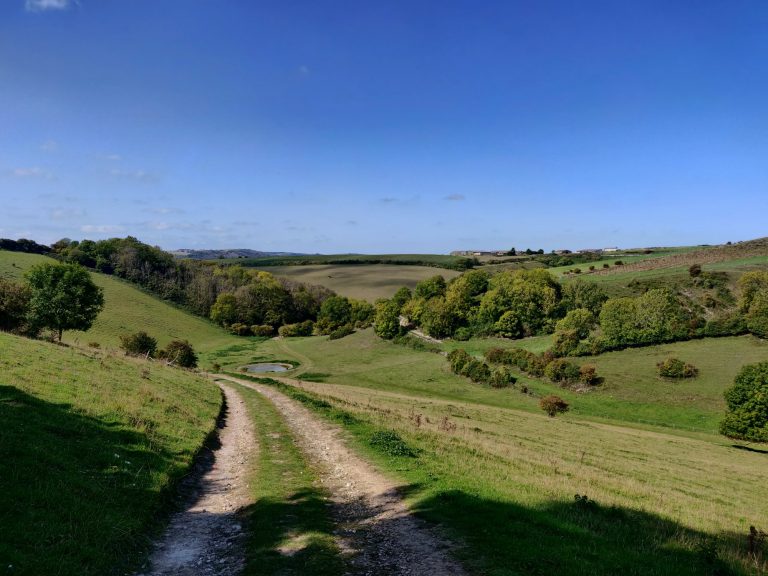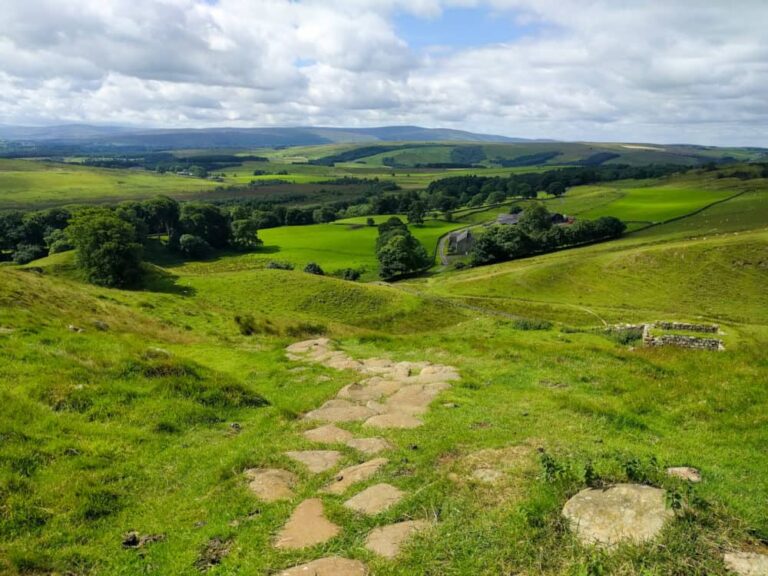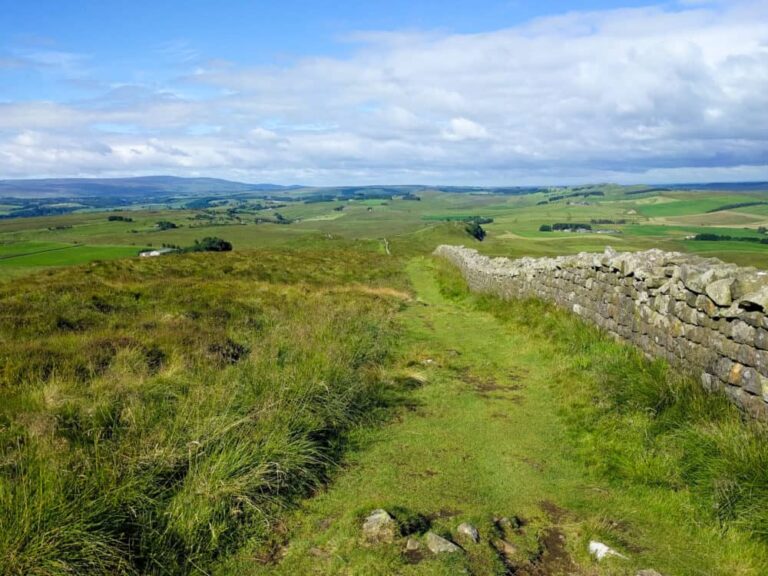17 of My Favourite London Parks
Articles on this site contain affiliate links, meaning I may be compensated if you buy a product or service after clicking them. The full privacy & disclosure policy is here.For a city that has a reputation for being crowded, built-up, and kinda grey, London has a remarkable number of parks. The sheer diversity of places to feel grass between my toes has always stood out, both when I was living there and every time I’ve gone back.
These aren’t just little patches of nature tucked into unloved sections of the city, either. Many of them are large, sprawling spaces in some of the most prestigious and expensive parts of London, and while parkland isn’t evenly distributed around the city, it’s rare to have to travel very far to find a decent patch of nature.
I try to spend as much time as possible in the capital’s parks, commons, and heaths whenever I’m in town, for all kinds of reasons.
Whether I’m running around Hyde Park and Kensington Gardens, having a picnic in Victoria Park, admiring the view from Hampstead Heath, or hanging out with the wildlife in Bushy Park, London’s green spaces are something I’ll never tire of.
Are these the best parks in London? Who knows: with over 3000 of them spread across the city, it’s going to take me a while to visit them all. What I will say, though, is that these are the ones I’m loving right now, and to back to every chance I get.
Here’s hoping you’ll like them too.
Central London
Hyde Park
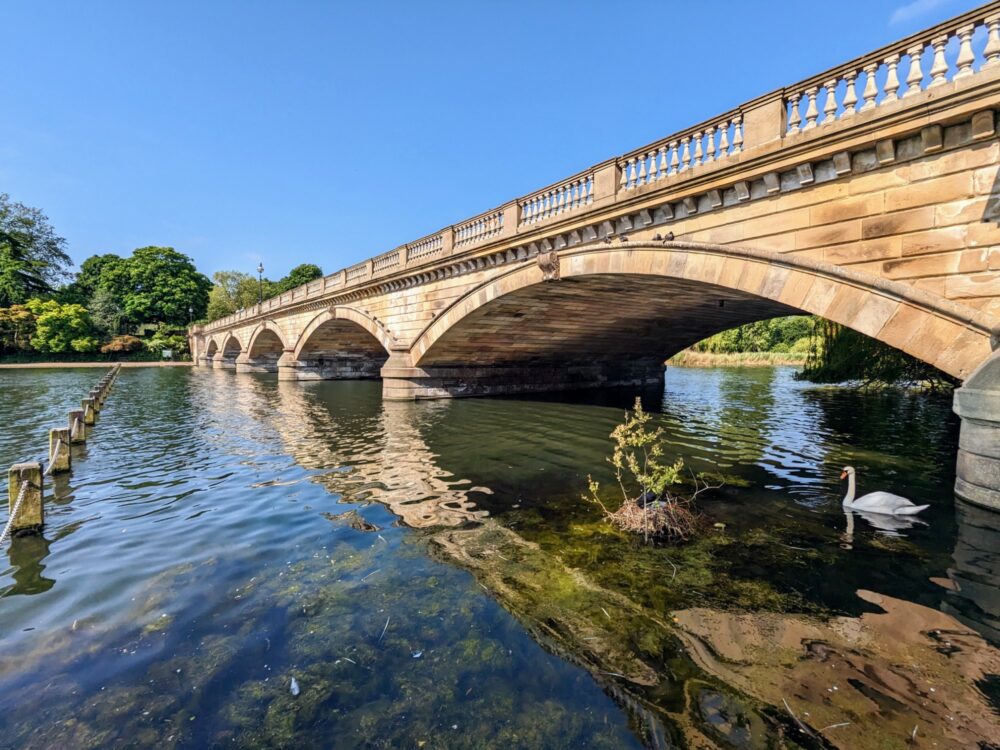
Hyde Park is one of the most famous parks in the world, but there’s a good reason for that. Having this much green space in the heart of an enormous city is a rare gift, and it’s been there, open to all, for nearly 400 years.
I’ve visited the park many times since I first moved to London over two decades ago, but never more often than when I was staying a short walk away in Notting Hill last year. My morning run took me around its perimeter, as did my evening strolls.
I met my brother there for a picnic (ok, mostly drinks) beside the lake, wandered past the Princess Diana memorial fountain, listened to the loonies free thinkers at Speakers’ Corner, and walked through the towering Wellington Arch enroute to some retail therapy on Oxford Street.
The sheer size of the park means I’ve always found space to walk, sit, or laze in the shade of a welcoming tree, even on the hottest summer weekend. The cafe and bar beside the Serpentine serves food and drink seven days a week, and after a couple of pints, you can even hire a pedalo to paddle around for half an hour and try not to fall out.
Surrounded by tube stations and bus stops, and easily walkable from the West End, it really couldn’t be any easier to get to. Loving Hyde Park is an absolute cliché, and yet love it I still do.
Kensington Gardens
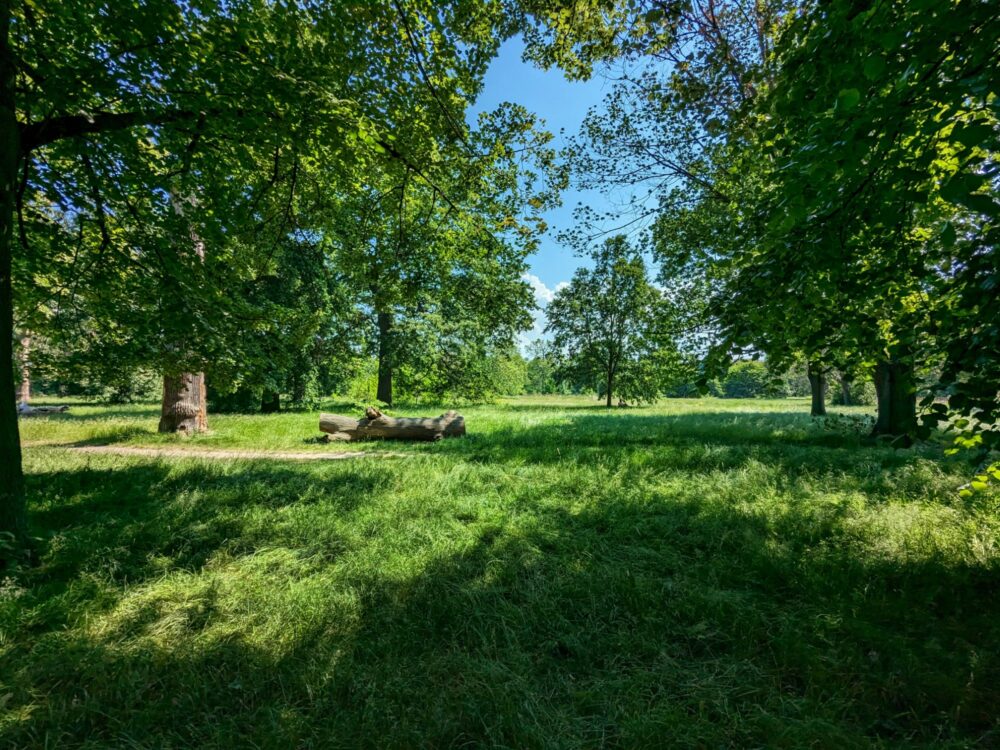
Of course, if I’m going to talk about Hyde Park, I can’t not mention Kensington Gardens. To be honest I was a bit late to the party with this park: despite it being officially split off from Hyde Park in 1689, I didn’t realise they were separate entities until a few years ago.
Sure, there’s the headline attraction of Kensington Palace at the western end (you can admire the lovely sunken gardens for free, but need a ticket to go inside), but there’s a lot more than that to see around its sprawling 265 acres.
Start in the south of the park with the Albert Memorial, a vast Gothic monument to Queen Victoria’s husband erected after his early death and overlooking (of course) the Royal Albert Hall. It’s hard to miss, shining in the sun and towering over the crowds of sightseers.
The path along the eastern border of the park passes a well-known statue of Peter Pan, commissioned by a local resident and put up in 1912 in the dead of night to delight passing kids. It must have worked, since it’s still there over a century later.
At the northern end sits the lovely Italian Gardens, full of small ponds and peaceful water features, alongside an always-busy cafe and a converted Rolls-Royce that’s found a second life as an ice-cream van!
All of the main paths through the park converge on the Round Lake, so if you’re ever lost, just follow the quacking and honking: there’s never been a shortage of ducks, geese, and swans whenever I’ve walked past.
Once you’re done with the sights, Kensington Gardens is also a great place for a picnic. Lauren and I packed up a hamper of meats, cheeses, and wine and had an indulgent birthday feast there one afternoon, laying out on a picnic blanket for hours as we watched the world go by.
Green Park
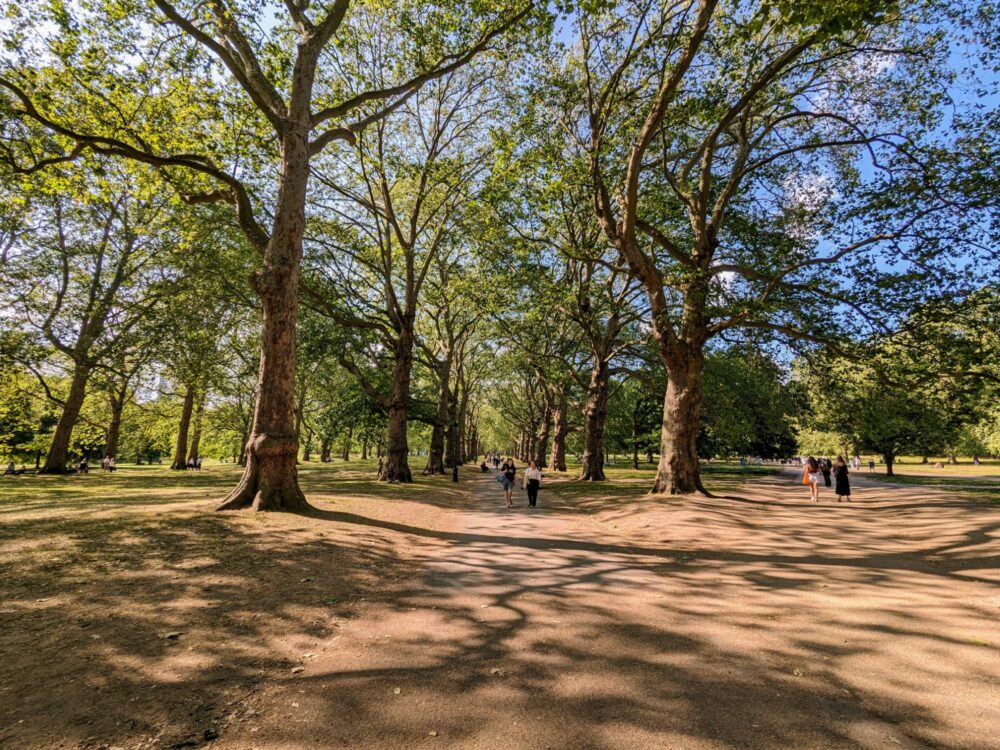
One of the most surprising things about central London is just how far you can walk while barely leaving a park. Even if you took the most direct route you could find (and god knows why you would), it’s over three miles from Black Lion Gate in Kensington Gardens to Storey Gate in St James’s Park, and you’ll walk straight through lovely Green Park along the way.
I’ve always liked this park, because it’s so different to those that surround it. It’s much more sparsely and simply laid out, without ponds or buildings, or even much in the way of flower beds beyond the garden on Constitution Hill.
You’d think that would make it boring, but I’ve never found it to be: instead, with so much space for trees, grass, and open meadow, it’s one of my favourite picnic spots in the city.
Being across the road from Buckingham Palace means it gets a steady stream of tourists marching along the avenue from Green Park station, but as soon as you head away from the main paths, you’ll have plenty of space to yourself.
St James’s Park
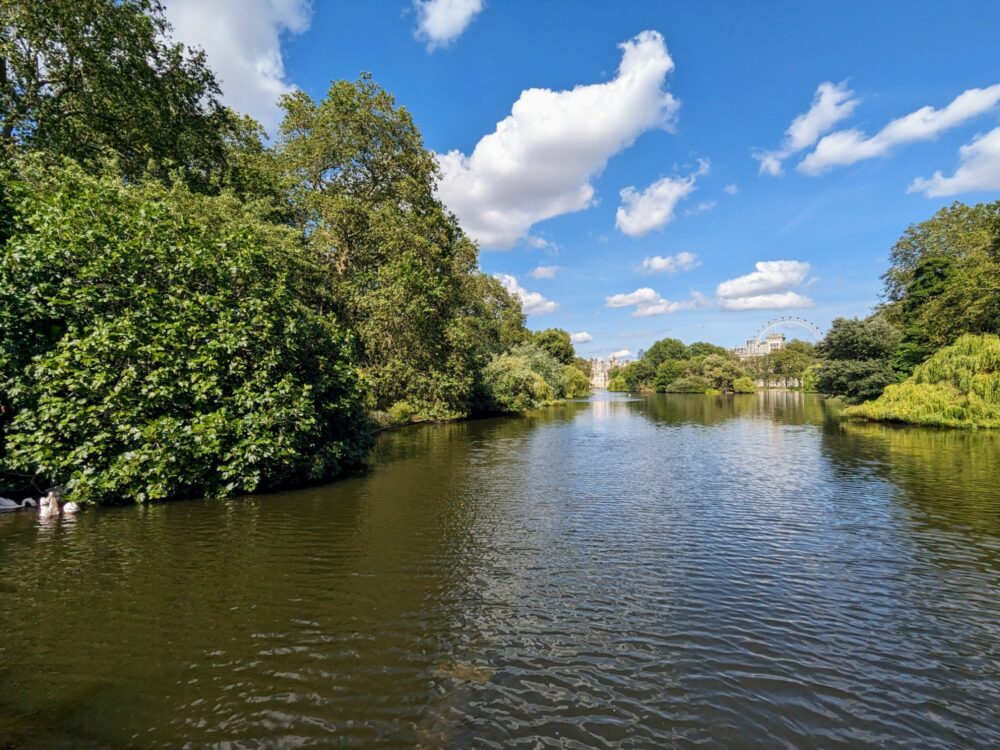
With Buckingham Palace on the western edge, St James’s Palace to the north, Whitehall and Downing Street to the east, and Westminster Abbey to the south, St James’s Park couldn’t be in a more prestigious location.
Fortunately, there’s more to the park than being surrounded by grand buildings. A large lake runs through the middle of it, surrounded by meadows and reed beds that are home to all kinds of wildlife…and not just the usual ducks and squirrels!
Pelicans have lived there since they were gifted to King Charles II by the Russian ambassador in 1664, and they’re fed beside Duck Island Cottage at the eastern end of the park between 2:30 and 3:00pm each day.
There’s a lovely cafe close to the lake, and plenty of room to lay out a picnic blanket, especially if you’re not there at the weekend. Head away from the main paths if you want a bit more space to yourself.
Of course, given the location, it’s hardly a surprise that St James’s Park hosts its fair share of major events. Royal weddings, jubilee celebrations, military parades, it’s seen it all, and there always seems to be something happening there.
If you’re planning a visit, just double check you won’t be sharing the experience with a few hundred thousand other people first!
St-Dunstan-in-the-East
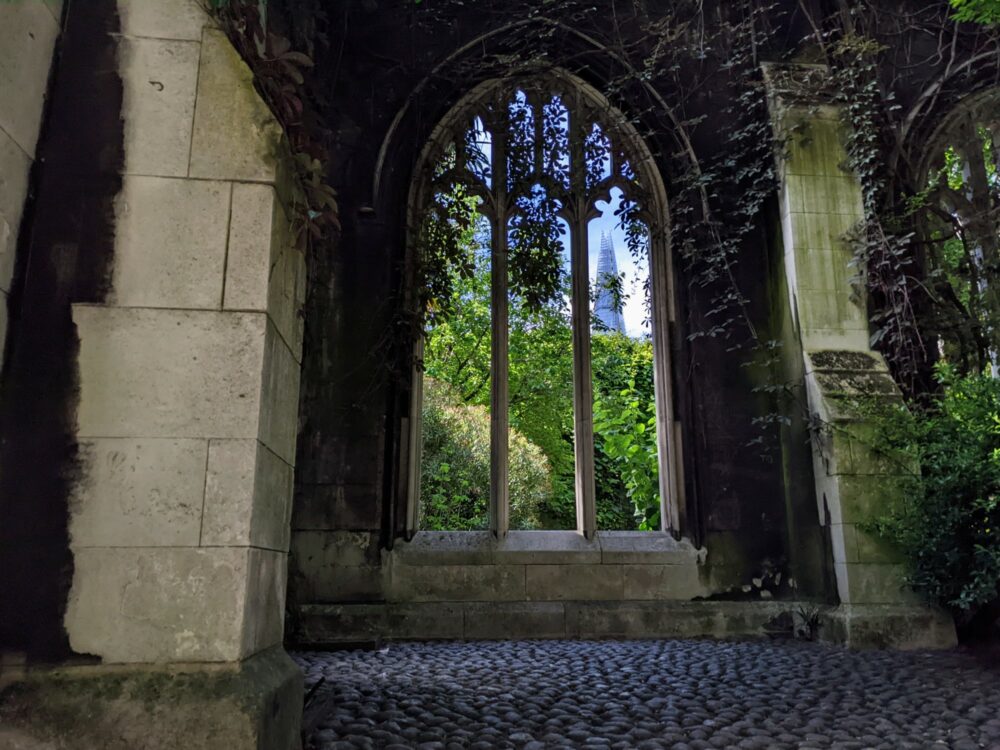
Easily the tiniest park on this list, St-Dunstan-in-the-East is really more of a public garden, but I’m including it here because (a) I love it and (b) it’s completely different to anywhere else on this list.
The ruined church that it’s based around dates back to the 1100s, was patched up after major damage in the Great Fire of London, fully rebuilt in the 1800s, and finally bombed to bits in the Blitz in 1941.
Somehow the tower and steeple survived, but other than a few blackened walls, that’s all that was left. The church was never rebuilt, instead turned into a park and garden in the 1970s.
Dwarfed by all the glass and chrome buildings nearby, with ivy growing up the charred stone and sprawling trees everywhere, it’s a great place to sit on a bench with a takeaway sandwich away from the noise and crowds of the city.
Well, at least if you visit early in the morning before the Instagrammers get there!
Regent’s Park
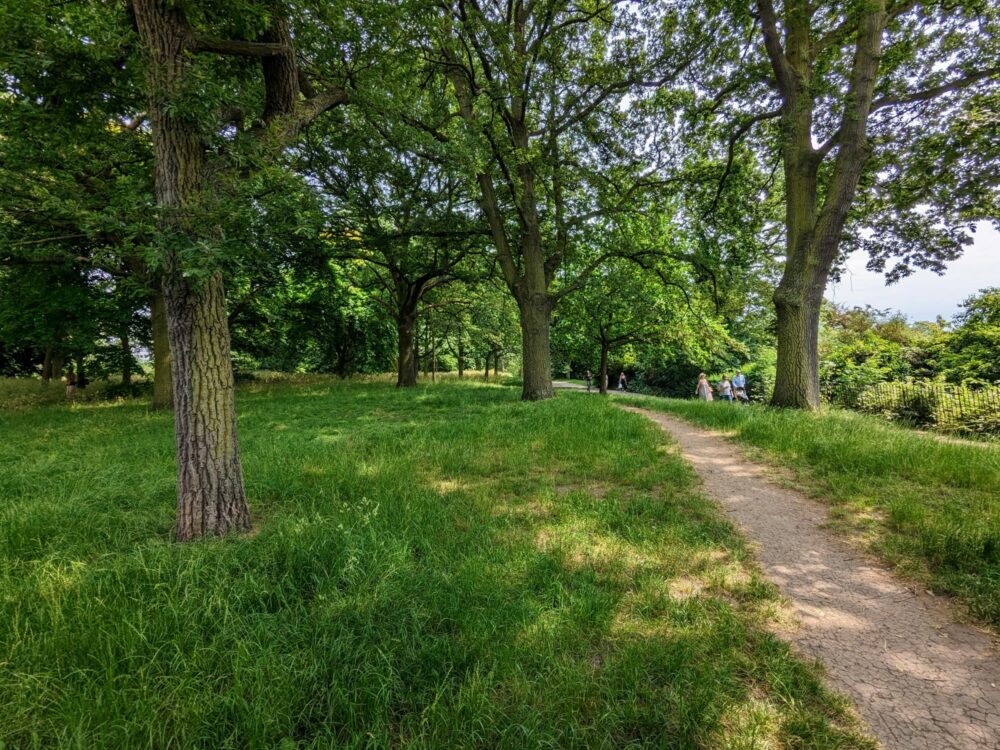
Of all the green spaces in London, Regent’s Park was the first one I ever visited. It was a damp, grey February day, and other than just how muddy my feet got, the only thing I remember about my time there was the squirrels.
Having just moved to the UK after growing up in New Zealand, squirrels were a new and exciting addition to my life. Look at their cute faces and bushy tails! See how unafraid they are! I wandered all over the park on a hunt for these silly rodents, not yet aware of just how mundane they were to everyone else around me.
Lauren grew up on the outskirts of London, and to this day she still can’t fathom my high levels of squirrel-based enthusiasm.
As exciting as the squirrels are, however, they aren’t the only thing that makes Regent’s Park worth visiting. It’s larger than Hyde Park, and has everything from London Zoo to the country’s oldest outdoor theatre and a century-old rose garden within its boundaries.
It’s also a great place for a picnic, or if you’re as disorganised as we were last time we visited, a great place to grab a coffee and ice-creams from one of the cafes and then sit on the grass jealously looking at everyone who’d had the foresight to pack a hamper.
You’ll often find shows and festivals being held there in summer, there always seem to be people in pedalos and rowboats on the lakes, and of course there’s the Regent’s Canal that runs for about nine miles and crosses both Regent’s and Victoria Parks on the way.
If you’re looking for a lovely walk, just follow the canal path in either direction: west towards Paddington or east towards Camden and Kings Cross. I’ve gone a few miles in both directions and probably prefer the Paddington section, but they’re both good!
North London
Hampstead Heath
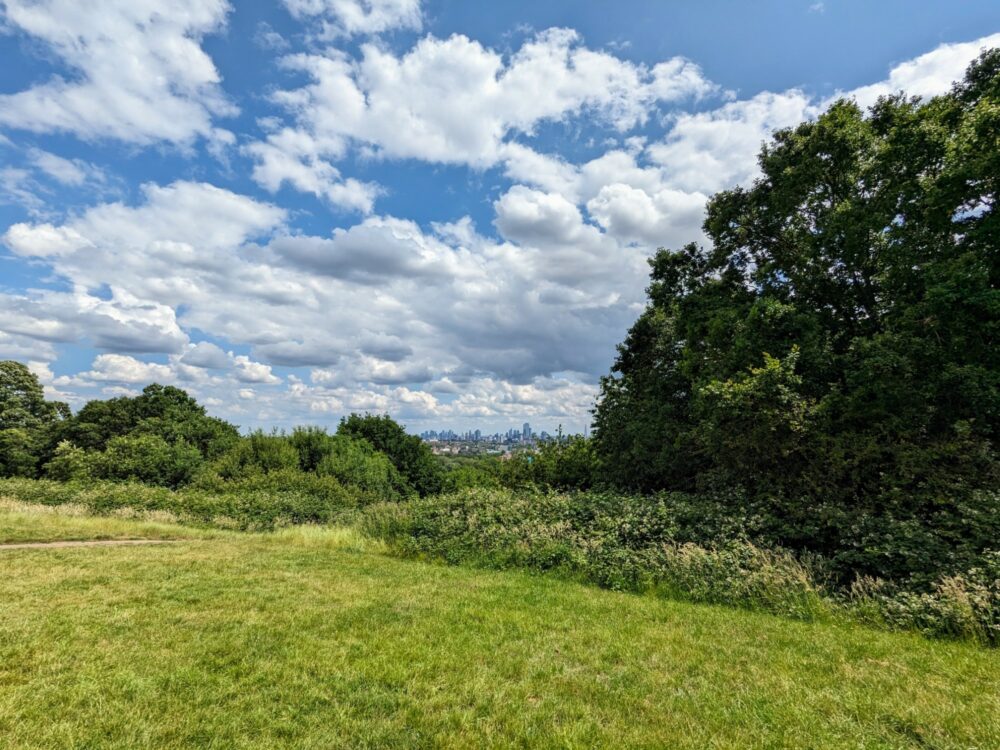
Leaving central London behind, it’s time to head north to the vast green expanse of Hampstead Heath. I’ve been to this park several times, but with nearly 800 acres to explore, still feel like I’ve barely scratched the surface.
It’s one of the highest areas in London, especially if you head up Parliament Hill, which has spectacular views all the way to the skyscrapers of the City four miles away. That’s no coincidence: by law, you have to be able to see St Paul’s Cathedral and Westminster from the top of the hill.
If you’re coming by tube, you’ll likely enter from one of the southern gates close to Parliament Hill. It’s lovely around there, but don’t limit yourself to just that bit of the park: there’s so much more to see, and it changes a lot as you wander.
There are proper patches of woodland, several lakes that used to provide drinking water to the city and are now a great spot to cool off during summer, a lido that’s open every day of the year, and seemingly endless trails and grassland to explore.
Towards the quieter northern end of the park sits Kenwood House, a sprawling 17th-century country house with a large collection of paintings, many by famous artists. It’s free to visit: you can book tickets in advance online or take your chances on the day.
Thanks to its size and all those trails that run through it, Hampstead Heath is a fantastic place to walk or run around. If, like me, your idea of a good day at the park revolves more around being active than lazing around under a tree, this is the perfect place to do it!
Waterlow Park
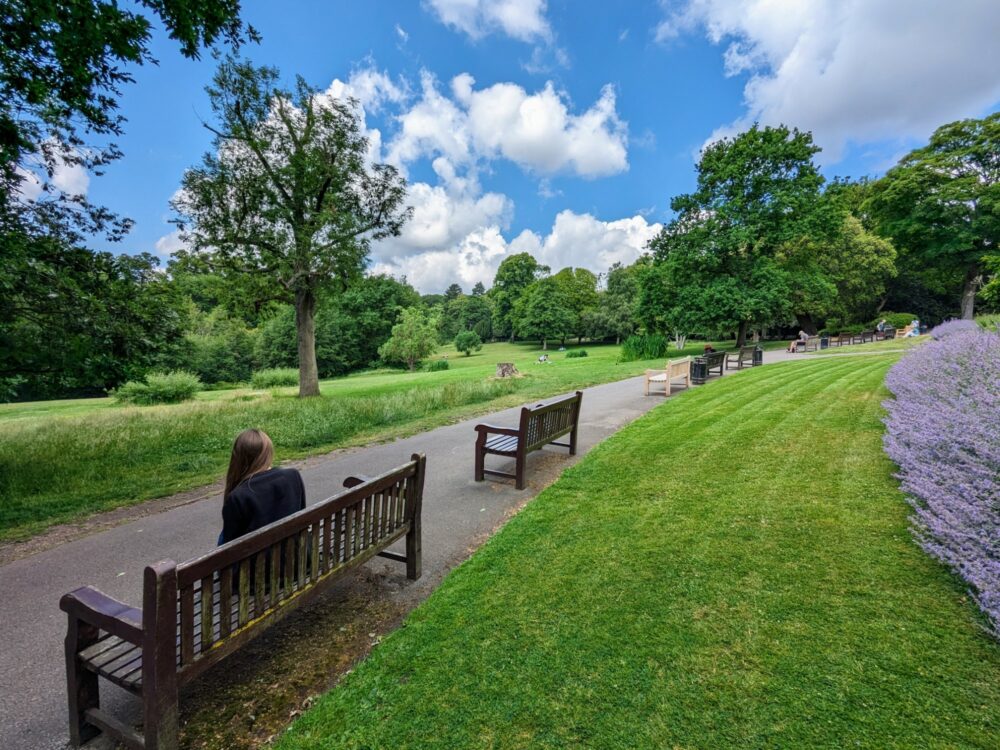
While Hampstead Heath dominates the map when it comes to green spaces in north London, it’s not the only game in town. If you’d prefer somewhere smaller for your picnic-and-working-on-your-tan experience, head to Waterlow Park, about half a mile from the heath.
I ended up there one day enroute to Highgate Cemetery, which surrounds the park to the west and south. Having only planned to walk through it on my way from the tube station, I found myself lingering for ages beside the flower beds and shade trees instead.
There are three small ponds in the park, unimaginatively named Lower, Middle, and Upper, and on a random sunny weekday there were several people out walking their dogs or reading their books alongside. It all had a very local feel, and I loved it.
Lauderdale House is the centrepiece of the park, running regular concerts, exhibitions, and adult education classes. There’s a great little cafe there as well: it’s open every day, if your caffeine levels are dropping dangerously low.
Whether you’re looking for somewhere to chill out before or after visiting all those famous graves at the cemetery, or just live nearby and want to feel the grass between your toes, this is the place to do it.
West London
Holland Park
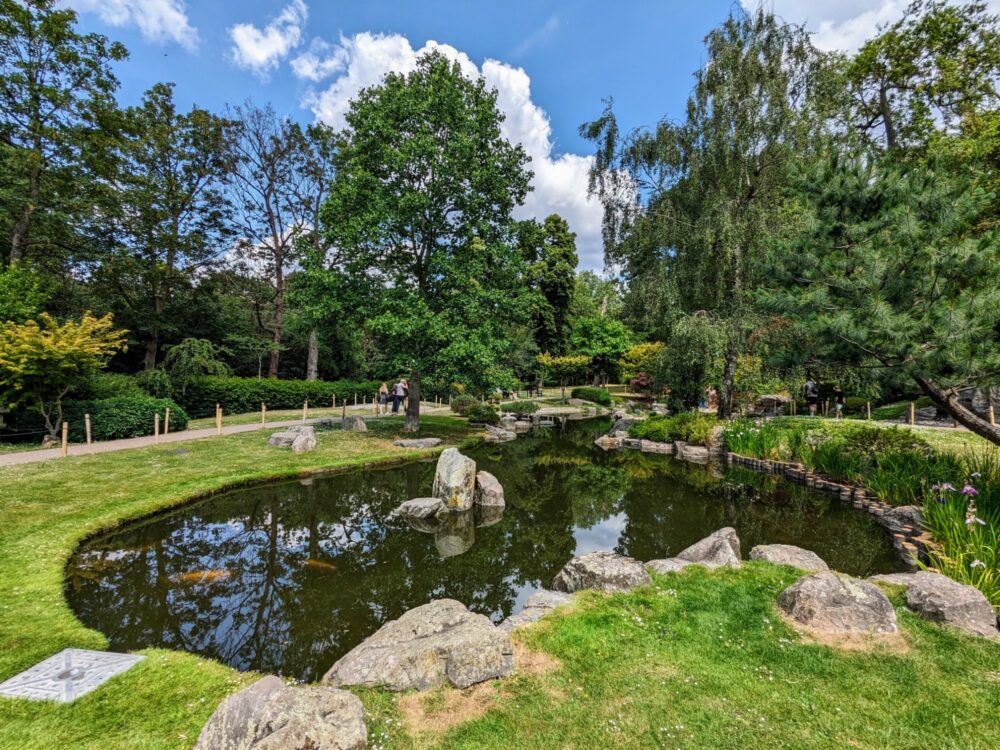
Scrolling around on my phone one morning in Notting Hill looking for somewhere new to sit and drink my coffee, I noticed a large patch of green nearby that I hadn’t been to before. That was good enough for me, so off to Holland Park I went.
Given how close it is to Kensington, I’m a bit surprised I hadn’t stumbled upon it in the past, but I’m glad I did this time.
Its 56 acres are very much split into two sections: while most of it is quite manicured, full of gardens, playgrounds, and sports fields, there’s a lovely area of wild(ish) woodland towards the northern end of the park that looks and feels completely different.
It doesn’t take long to wander the various trails through the trees, but given how genteel the surrounding area is, I’m happy this little section of unkempt forest exists at all. It’s the best bit of Holland Park for me, although the ponds and flower beds are lovely in their own way.
There’s a cafe in the middle of the park, attached to what little is left of Holland House, a sprawling country house built in the early 1600s but almost completely destroyed by German firebombing during the Blitz in 1940.
If you’re heading there with kids, you won’t struggle to keep them amused: the two playgrounds were being well-utilised when I was there during school holidays.
Ravenscourt Park
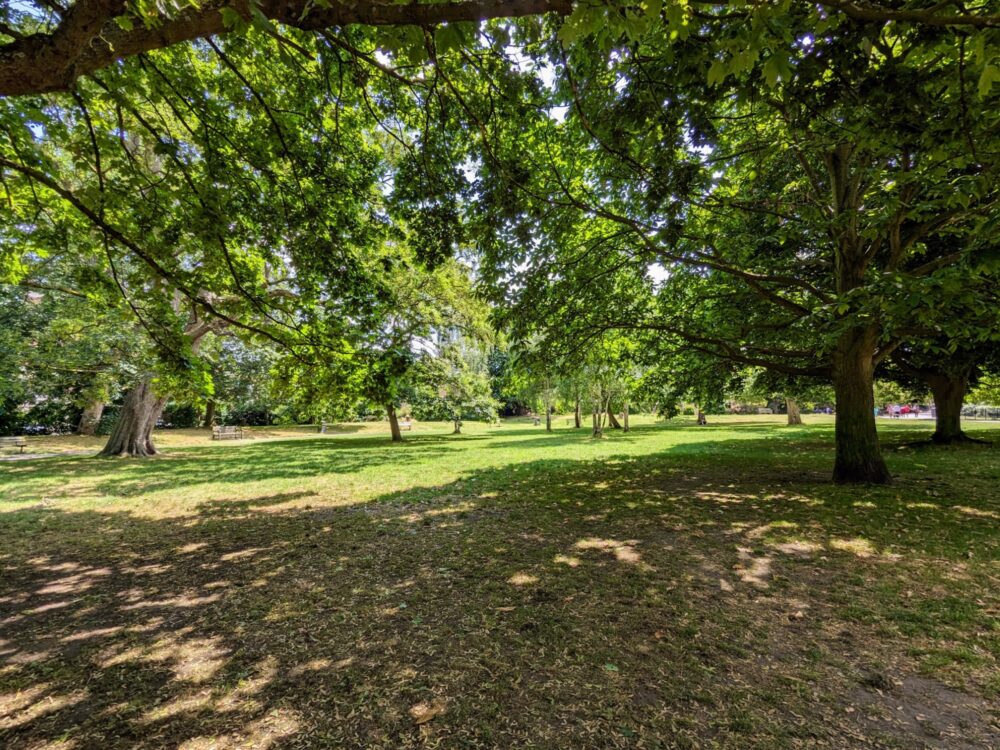
Heading further west into Hammersmith, large patches of green space mostly dry up for a couple of miles until you get to Ravenscourt Park.
I mean yes, there’s Shephard’s Bush Green, but I’m choosing not to include it here, mostly because my only exposure to it was 25 years ago when I fell asleep under a tree after one (three) too many pints at the infamous, long-departed Walkabout pub over the road.
Ravenscourt Park had a distinct lack of drunk Antipodeans when I last visited, but it did have several other, more welcome aspects.
To start with, the little cafe there is a delight: the coffee is unexpectedly good, as is the fish finger sandwich, and being able to sit outside under a shady tree to enjoy them on a sunny afternoon is the icing on the cake.
It’s definitely a family-friendly sort of place, with a small lake to walk around, playgrounds, and a paddling pool, but there’s plenty of space to spread out on the open area in the south of the park.
I ended up lying under a tree here for ages on that sunny afternoon I mentioned, in severe danger of repeating my performance from a quarter-century earlier even without the beer.
East London
Victoria Park
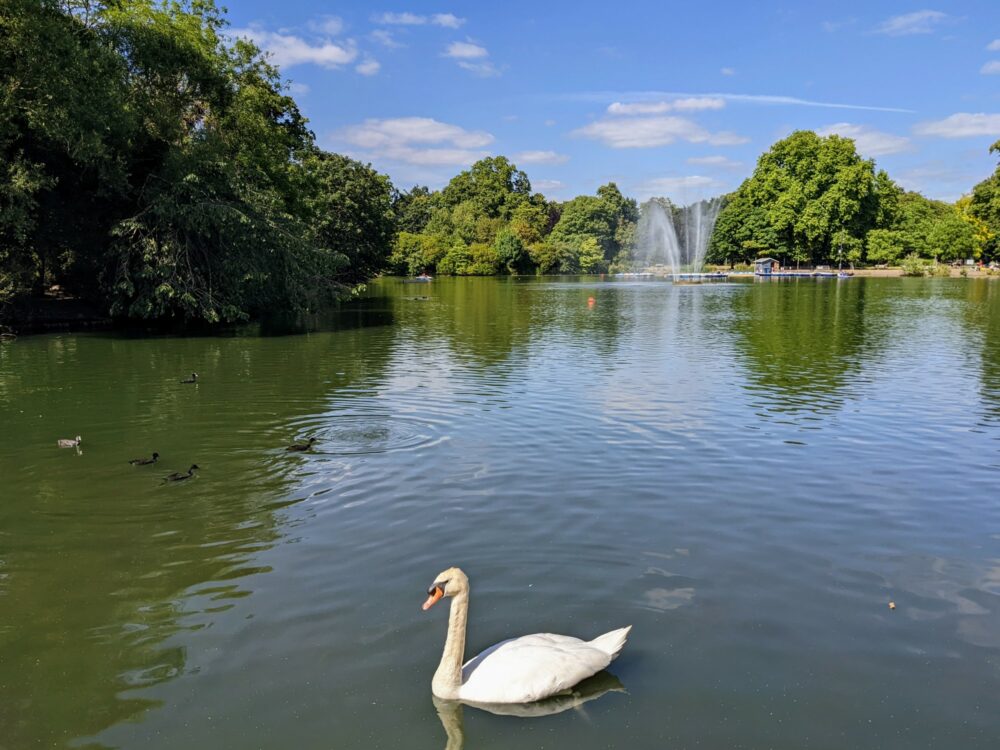
I’ve spent a lot of time in Victoria Park over the years: of all the green spaces I’ve visited in London, this is probably the one I’ve ended up in most often.
My brother used to live nearby in Homerton, so our wanders often took us through the park, and then Lauren and I spent a blisteringly-hot June in Hoxton a couple of years back, where picnics and general lazing about under shady trees played a major part.
For me, it’s got quite a different vibe to some of the central city parks, especially over summer. It’s known as “The People’s Park” for a reason: it’s one of the most popular parks in the city, and has always felt busy (although not crowded) every time I’ve gone there.
On hot days, I particularly like the quieter, shady areas in the western part, near Regent’s Canal. I think I’m in the minority there, though, based on the number of people I’ve seen sunbathing, BBQing, and throwing a frisbee around the more open sections further east.
As popular as Victoria Park is over summer, its weekend food market is worth visiting at any time of year. One cold winter’s morning, on my way to somewhere far less interesting, I stopped at an unassuming little market stand and bought what was, without question, the best Scotch egg of my entire existence.
I’m not saying you have to do the same. I’m just saying your life will be a little less complete if you don’t.


Hot tip: if you’re walking towards the park from the west and need some fancy meats, cheese, and wine for a picnic, stop in at Provisions on Hackney Road on your way. We did, one memorable afternoon, and still talk about it to this day.
London Fields

Speaking of delicious eats, East London seems have a particularly strong connection between “places to get delicious takeaway food” and “great nearby parks to eat it in”. Nowhere is that more true than London Fields, which sits at one end of Hackney’s wonderful weekend Broadway Market.
Running every weekend on the street of the same name, we had the good fortune of spending a week or so there in an Airbnb. The accommodation was nothing special, but the market definitely was, and everyone we’ve taken there since strongly agrees.
Whether we’re buying burgers or dosas, curries or ice-creams, one thing never changes: we eat them in London Fields. The area right beside the market (and toilets) gets busy while the market is running, but walk even a couple of extra minutes and you’ll have all the space you could wish for.
I really like the wildflower meadow in the middle of the park (it’s stunning in spring), while the northern end has an open-air lido and cafe, a cricket pitch that attracts a good crowd whenever there’s a game on, and a great pub called, surprisingly enough, Pub on the Park.
As busy as the park gets at weekends, it’s super-chilled during the week; I spent a very relaxed couple of hours reading a book under a tree one random Tuesday, and away from the main path there was hardly anyone around.
South London
Battersea Park
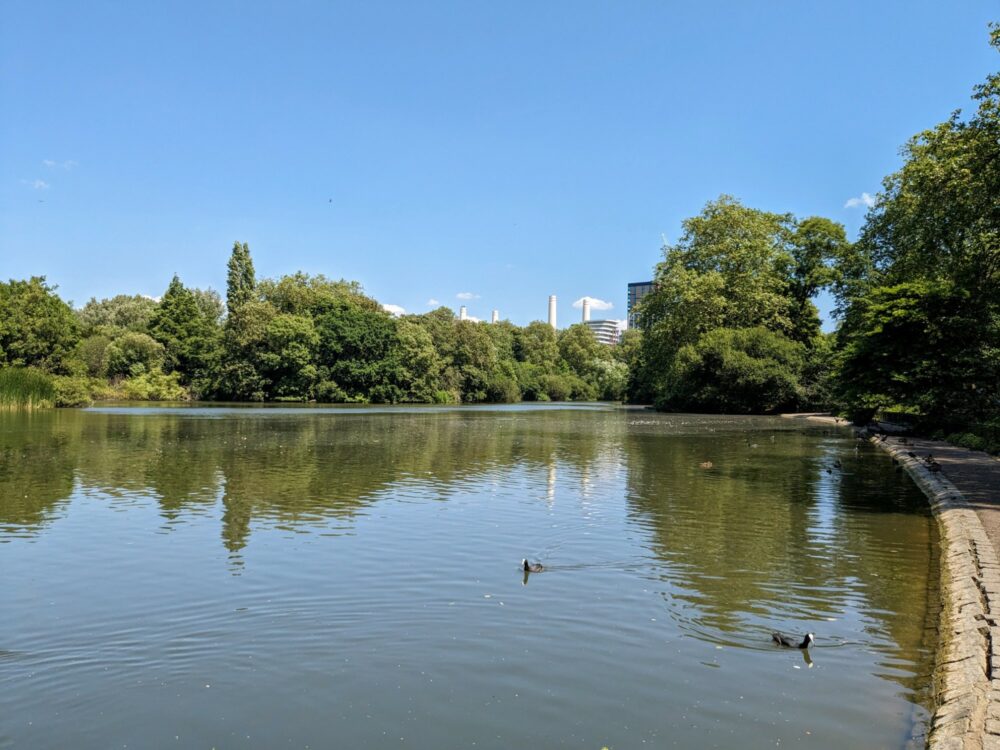
Whether you’re combining it with a trip to the old-power-station-turned-shopping-mall alongside, heading to an event, or just looking for a place to lay out in the sun for the afternoon, Battersea Park is a sprawling 200-acre delight.
Stretched out along the south bank of the Thames, the park dates back to the mid-1800s. It gets quite busy on sunny weekends, although I’ve never struggled to find a bit of space to myself; it just sometimes needed a bit of extra walking!
The standout feature, at least for me, is the large lake that takes up about a quarter of the park. Given that it’s named Boating Lake, it’s probably no great shock to learn you can hire pedalos and rowboats there: there were plenty of both out on the water on my last visit, slowly moving past (or in some cases, through) the overhanging foliage.
If you don’t feel like being on the lake, a walking path goes around the entire circumference, running for about a mile. If you’re in need of refreshment along the way, pop into the Pear Tree Cafe: grab one of the outdoor tables if the weather’s nice.
Battersea Park’s gardens are diverse and impressive: as well as the traditional English-style garden beds you find elsewhere, there’s a great sub-tropical garden to wander through (check out the cherry blossoms in spring) a small rosery, and a few other small gardens as well.
Be sure to swing past the Victorian bandstand at some point: you won’t have trouble finding it, since it’s right in the centre of the park and all of the major paths through the park lead to it eventually!
Greenwich Park
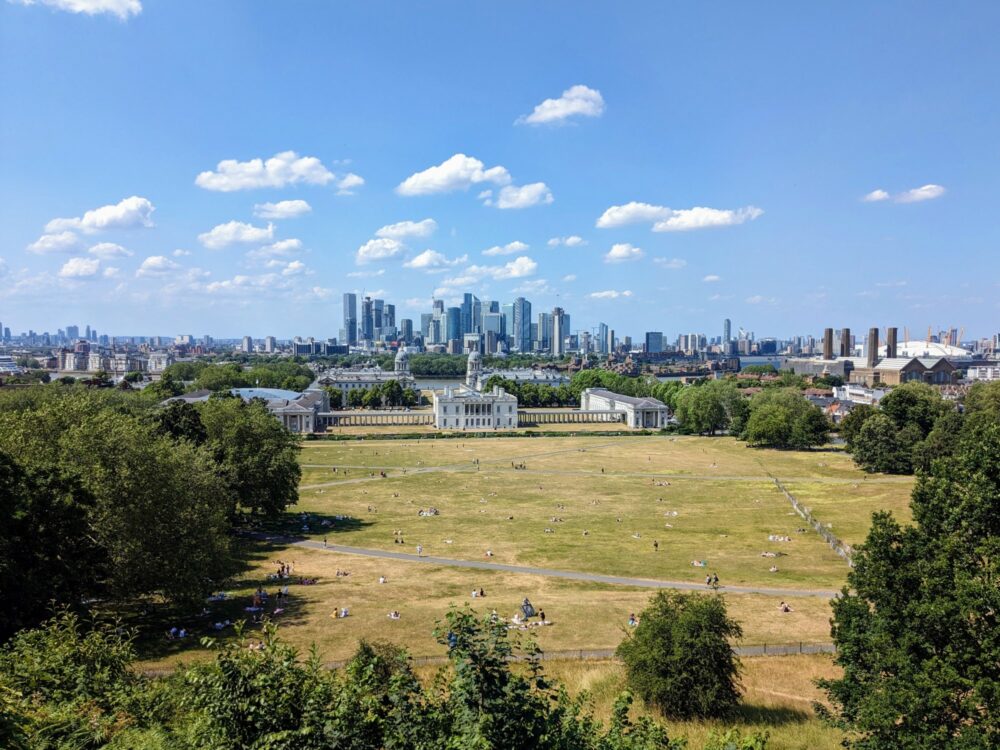
I’ve always liked Greenwich, from the Cutty Sark to the village feel of its cobbled streets, and its 180-acre park is very much the centrepiece.
Is it my favourite park in the city? It definitely ticks all the right boxes: easy to get to, loads of open space for sunbathing, shady trees to picnic under, a fascinating history, and of course, that epic view.
While the vista from Parliament Hill on Hampstead Heath is impressive, I reckon the one from the Royal Observatory has it beat.
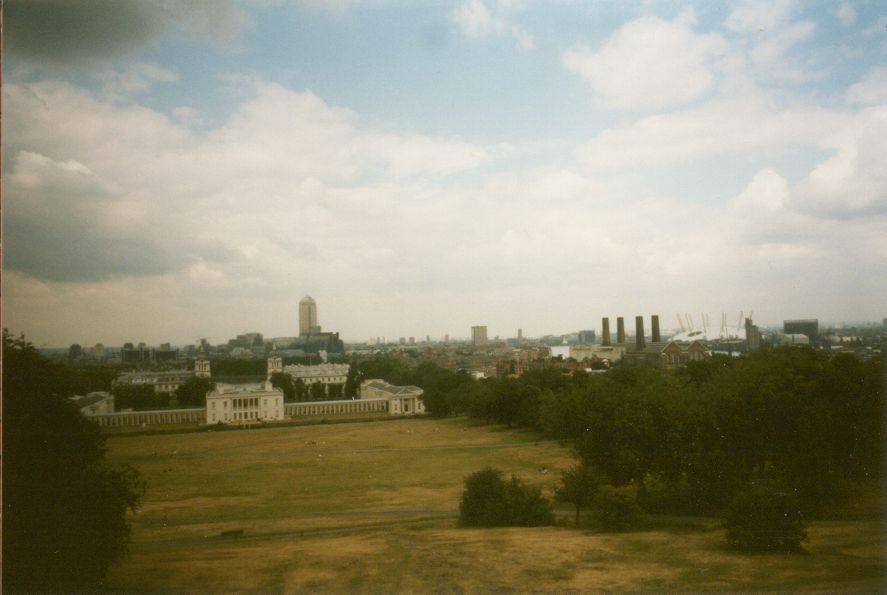
I was digging through some old photos recently, and found this one taken from almost the same spot 25 years earlier. The Docklands skyline has changed a bit since then (fun fact: that single tall building is One Canada Square, and I worked on the top floor at the time!), but the park itself is much the same.
Once you’ve climbed to the top of the hill to take the same photo yourself, it’s definitely worth shelling out for an entry ticket to the Royal Observatory if you haven’t been inside before.
As well as being able to straddle the Prime Meridian and stand in the eastern and western hemispheres at the same time, the story of the observatory and the astronomers who lived and worked there is fascinating. We spent about 90 minutes wandering around the buildings and checking out the exhibits, and it was well worth the money.
Head over to One Tree Hill in the east of the park for another great viewpoint, and don’t forget to check out the gardens in the southern part of the park either: they’re a great spot for spotting cherry blossoms in spring, but are worth the visit year-round.
Further Out
Richmond Park
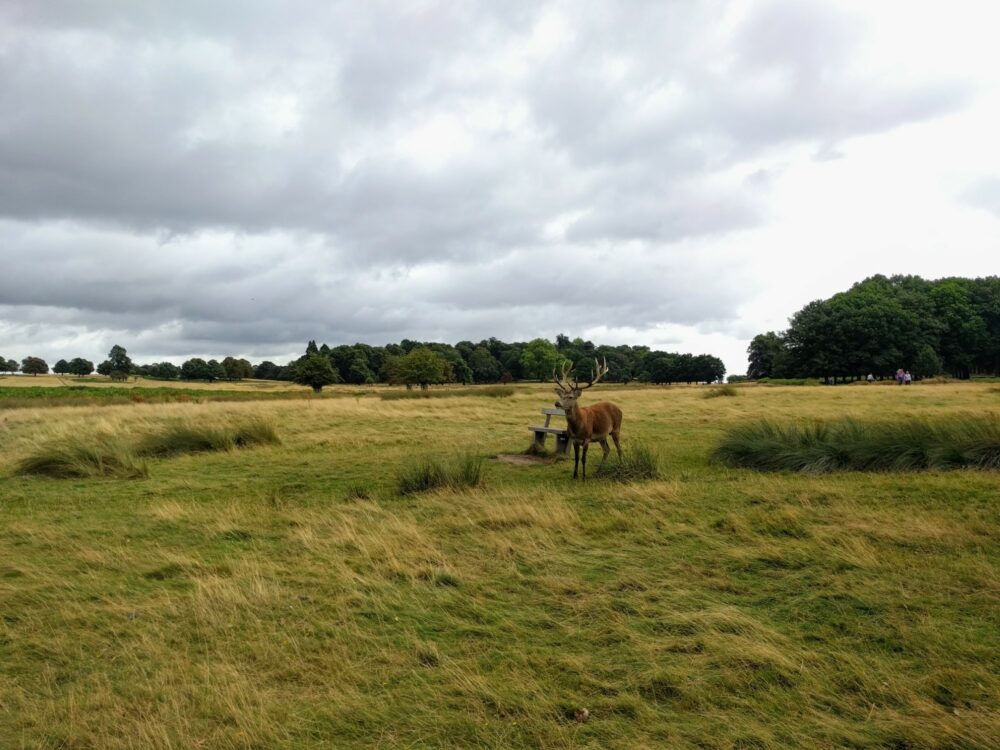
All the parks I’ve talked about so far are within five miles of the city centre, but London’s love of green spaces definitely doesn’t end there. Head further out and the parklands get larger, less manicured, and much more full of wildlife.
Richmond Park is a great example. This vast park is the second-largest in London, and there’s no chance you’ll be able to explore its 2300 acres in a single visit. I’ve been there three or four times now, and still have a lot more to see.
It’s been home to hundreds of red and fallow deer since at least the 17th century, and there’s about a zero percent chance you won’t see any while you’re there. I’ve seen them cooling off in the ponds on a hot day, grazing in large herds on the grasslands, and, as you can see above, posing majestically for a photo op.
There’s a great viewpoint at King Henry’s Mound, complete with a conveniently-located bench. You can see Heathrow Airport and Windsor Castle to the west, and if you look through the telescope alongside on a clear day, as far as St Paul’s Cathedral to the east.
If it’s gardens and woodland you’re after, head to the Isabella Plantation in the south of the park: I’ve made a point of heading to this botanic garden every time I’ve visited, because it looks completely different throughout the year. Spring is the most colourful, but there isn’t a bad time to go.
Cafes are dotted around the park: while there are better ones nearby, my favourite inside the park is probably the one beside Isabella Plantation. The coffee is decent, and they make a pretty great bacon roll. Sometimes in life, after a long day of walking around a park, that’s really all you need.
Putney Heath
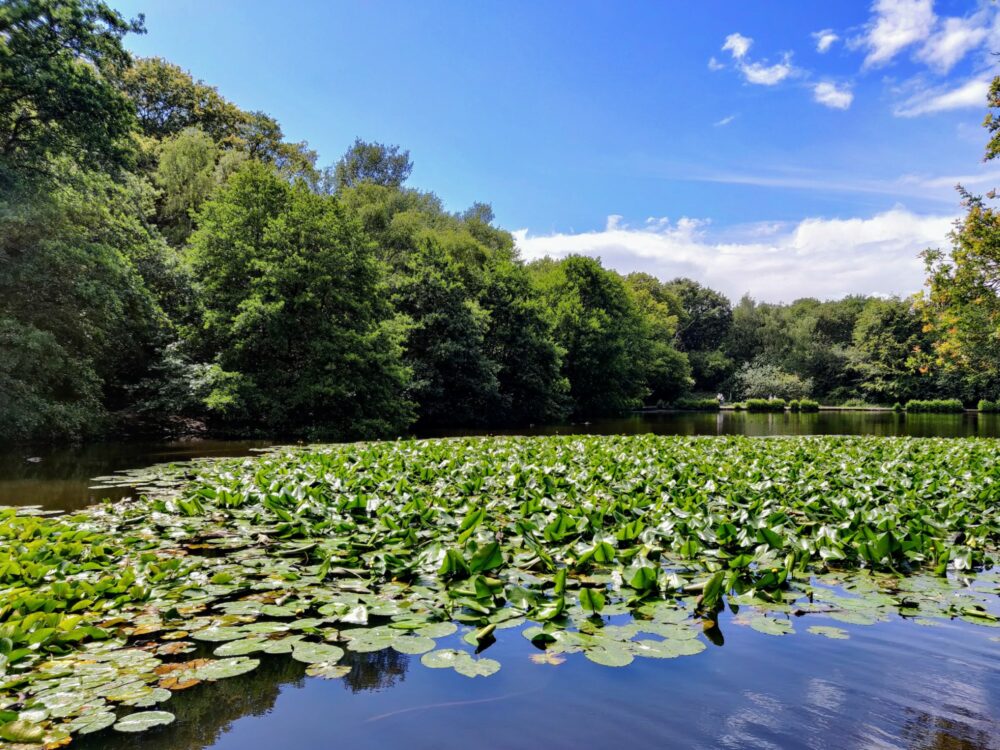
Putney Heath sits just southeast of Richmond Park, separated by the busy A3/Kingston Road that’s loud and kind of annoying to cross, and attached to the larger Wimbledon and Putney Commons.
To be honest I don’t know exactly where the heath ends and the commons starts, and I guess it doesn’t really matter. What I do know, however, is that if you’re into woodland and dirt trails as much as I am, this is the place to go.
I particularly like stomping around there on a crisp autumn day when there’s hardly anyone else around, finding random new paths and getting my boots nice and muddy. If there’s been a bit of rain around, you’ll want to take a change of shoes for the trip home!
If you’re there in the warmer months, be sure to head to Queensmere, one of several small lakes in the area. A large crop of water lilies grow there every summer, there’s loads of birdlife, and I’ve always been able to easily spot fish from the banks.
Nearby sits the kinda-famous Wimbledon Windmill, originally a working mill that now houses a small museum devoted to, you guessed it, the history of windmills. It’s free to enter, but only open weekends and public holidays between April and October. If it sounds like a can’t-miss attraction to you, be sure to time your visit appropriately.
Bushy Park
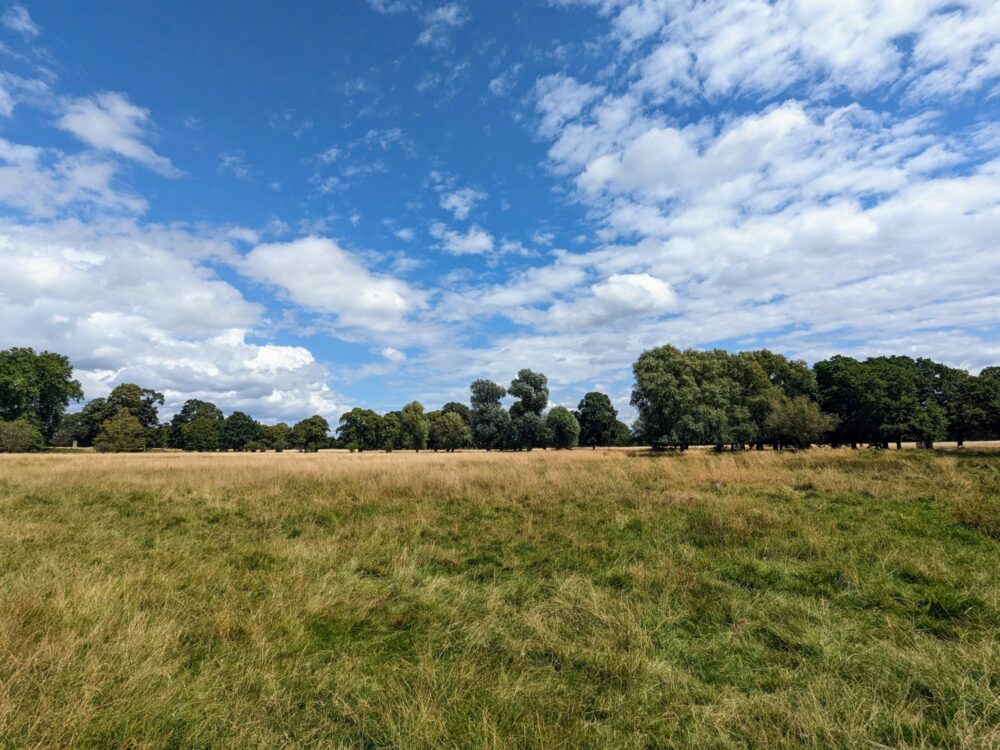
Bushy Park sits the better part of ten miles from central London, and it feels even further away when you’re wandering around its vast open spaces. Over 1100 acres in size, the land was once part of the grounds of Hampton Court: the palace is just to the south.
Like nearby Richmond Park, herds of deer roam through Bushy Park, and they’re equally easy to find. Last time I was there, I turned a corner and just about walked into a herd of at least a dozen lazing around beside a fence. I’m not sure who was more surprised!
While I prefer to amble through the overgrown grassland at a gentle pace, others explore at a faster clip: Bushy Park was the home of the very first parkrun back in 2004. It’s since spread around the world, and over a thousand people show up at the start line here every Saturday morning for a 5km jog.
Other than panting runners, the most well-known feature of the park is the bronze figure atop the Diana Fountain. Unlike most statues and sculptures with that name in the capital, this one depicts the Roman goddess of nature, and dates back to the 17th century.
I always end up in the woodland gardens at some stage during my visit, with its dirt trails that wander around the lake and through the trees, and gardens that feel more natural than most park flower beds.
I’m not saying that the reason I end up there so often is only because the gardens are right beside the best cafe in the park, but let’s just say it’s not entirely unrelated. If you’re after a bacon roll or an ice-cream and a hot drink, The Pheasantry is the place to get it.
So that’s it, my favourite parks in London at the moment! Did I leave any out? Where in the city do you like to go for a little slice of nature?

